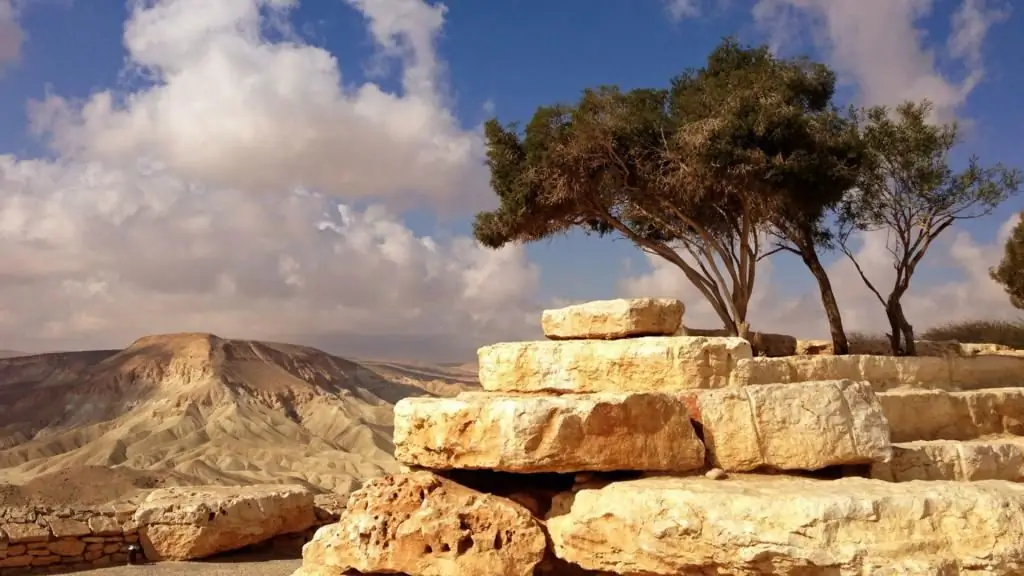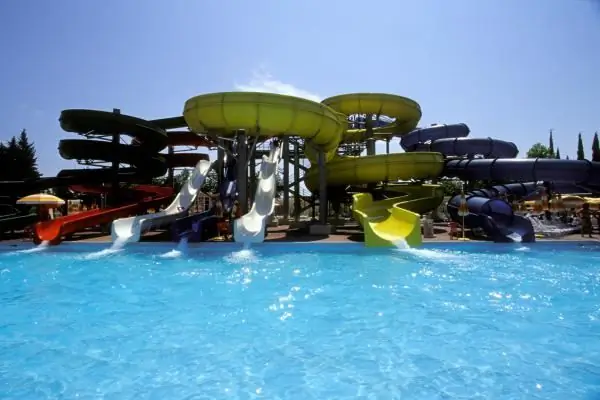- Author Harold Hamphrey [email protected].
- Public 2023-12-17 10:06.
- Last modified 2025-01-24 11:10.
Thebes in Greece is a city with a rich and very interesting history. In the Bronze Age it was an important Mycenaean center, in the classical period it was a powerful city-state. Participated in both the Persian and Peloponnesian wars. He was the main rival of ancient Athens. Today the city is the largest settlement of the regional subdivision of Boeotia. And also a very attractive place for tourists coming here from almost all over the world.
Location
The city of Thebes in Greece is located on the plain of Anion, between the freshwater lake Iliki in the north and the Siteron mountains in the south. It neighbors with Athens (located 50 km) and Lamia (100 km). It can be reached both by motorway and by rail.

Origin story
The story of the origin of Thebes in ancient Greece has been preserved in the form of legends and myths. So, the inhabitants of the country themselves attributed the foundation of the cityCadmus - the son of the Phoenician king. However, it is not known for certain how exactly this settlement appeared.
No one knows exactly how it developed originally. At the same time, modern scientists have found out that Thebes was ruled by the agricultural aristocracy, which protected the integrity of the city with strict charters on property and its inheritance.

Archaic and classical periods
At the end of the 6th century BC. e. The Thebans began to quarrel with the Athenians, who helped the small city of Platea maintain its independence. They even fought in a famous battle in 479 BC. on behalf of the Persian king Xerxes I. For which they were subsequently punished by the victorious Greeks, who approached Thebes and demanded the extradition of aristocrats who were representatives of the Persian party. When they were denied this, Pausanias laid siege to the city along with his army and forced the Thebans to hand over the culprits to him for reprisal against them.
During the feud with the Athenians, Thebes lost their hegemony over the Boeotian cities. She was returned to them only in 460 BC. e. The walls of the city were restored, and its inhabitants regained their power. In the struggle between Corinth and Kerkyra (435 BC), the Thebans helped the Corinthians equip their expedition. Then, up to the world of Nikiev, they supported the Spartans. However, a rift soon broke out between the two allies because Sparta refused to consolidate Thebes' full hegemony over Boeotia as a reward for their help.
In 424 B. C. e. the Thebans inflicted seriousdefeated the Athenians at the Battle of Delia and for the first time demonstrated their full power. In 404 BC. e. they called on the Greeks to completely destroy Athens, but a year later they secretly supported the restoration of their democracy in order to be able to resist Sparta. In 395 BC. e. at the battle of Haliart, they again proved their military power against the Spartans, but they still lost. The Thebans did not give up. And already in 371 BC. e. they were able to defeat the Spartans in the battle of Leuctra. The victors were hailed throughout Greece as champions of the oppressed.

Further history
Thebans in 371 B. C. e. were able to establish their power over several major cities. In 395, they even made peace with the Athenians, who also feared the Spartans. But after the death of Epaminondas in the battle of Mantinea, they again lost their power. And in 335 the city was destroyed by Alexander the Great. According to legend, only the temples and the house of the poet Pindar could survive the pogrom. The territory of the city was divided among other cities of Boeotia, and its inhabitants were sold into slavery.
In 323 B. C. e. Thebes was restored by Cassander, who sought to correct the mistakes of Alexander the Great. Many cities provided the Macedonian king with their workers. The Athenians, for example, rebuilt a large part of the Thebes wall, and the inhabitants of Messinia invested their money in the restoration. As a result of common deeds, the plan to recreate the settlement was implemented. Despite this, Thebes was never able to regain their power.
During the earlyByzantine period Thebes in Greece served as a place of refuge from foreign invaders. In the 10th century AD, the city became the center of the silk trade. By the middle of the 12th century, he had become the largest producer of this material in the entire Byzantine Empire, overtaking Constantinople. Despite being brutally sacked by the Normans in 1146, the town was quickly restored and flourished until it was conquered by the Latins in 1204.
Today Thebes is a small town engaged in the production of agricultural products. It is very popular with tourists who come here for sightseeing.

Thebes in mythology
The city of Thebes in Greece is "surrounded" by legends and myths. So, some old residents of this glorious place talk about Cadmus, the son of Agenor and the ancestor of Oedipus. Allegedly after killing the giant serpent (or dragon) sent by Ares to protect the Aria of Spring, Athena instructed Cadmus to sow the serpent's teeth into the ground. As soon as he did this, warriors immediately appeared from the soil, who created the city of Thebes.
According to another legend, the city was also the birthplace of the mythological pan-Hellenic hero Hercules. And they were also the place where the Sphinx (a mythical creature with the head and chest of a woman, a lion's body, a snake's tail and huge wings) demanded from each traveler to solve the riddle about a person's age. Those who could not answer it were eaten by the creature. When Oedipus the King solved the riddle, the Sphinx was destroyed.
Another mythologicala story directly related to the city is "Seven against Thebes". One day a war broke out between the two sons of Oedipus. Polynices was expelled from Thebes by his brother Eteocles. He enlisted the help of the Achaeans from the Peloponnese to re-establish his authority in the city. However, during the siege of the walls of Thebes, six of the seven champions, including Polynices himself, were killed. Nevertheless, the attack was successful and the city was captured. This myth is perhaps a symbolic metaphor for the general situation in Greece after the end of the Mycenaean period in its history.

Famous people of Thebes
As the story goes, many worthy people lived in the city of Thebes in Greece over the years. For example, Alexander the Great, Tsar Cassander, General Epaminondas, General Pelopidas, artists Aristides and Nicomachus visited here. In addition, the Evangelist Luke, an apostle, a Christian saint, the first icon painter and patron saint of all painters, is buried here. Of our contemporaries, the singer Haris Alexiou, the theologian Panagiotis Bratsiotis and the artist Theodoros Vryzakis lived in Thebes.

Interesting places
The main attraction of the city of Thebes in Greece is the archaeological museum, reopened in the summer of 2015. Here you can see various exhibits, including frescoes and clay pots, scorched by the hands of the ancient inhabitants of the country. You should definitely visit the ruins of the ancient fortress of Kadmiya, which was built in the Bronze Age.
Another interesting attraction of Thebes in Greece is the church of St. Evangelist Luke, in which his relics rest today. It is said that every year near his tomb, many people suffering from eye diseases are healed and even begin to see the world around them.
There are few interesting sights of the city left. But it’s still worth visiting Thebes to see with your own eyes the city where Hercules was “born” and Luke 1 of the 4 Gospels was written. Have a good trip!






